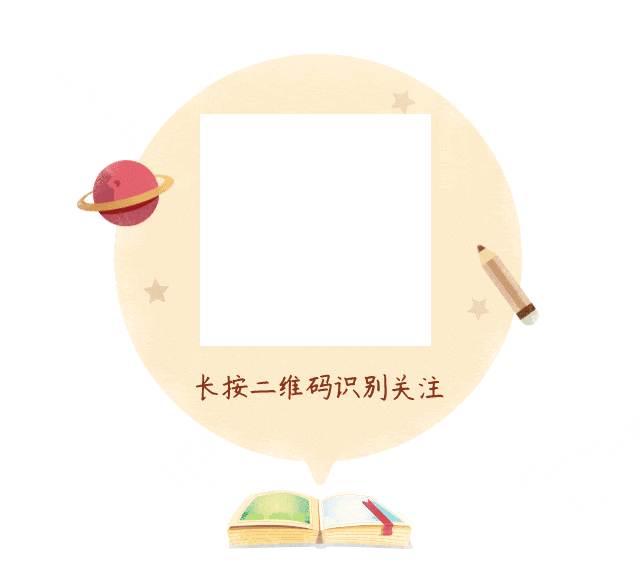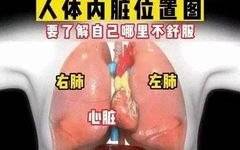
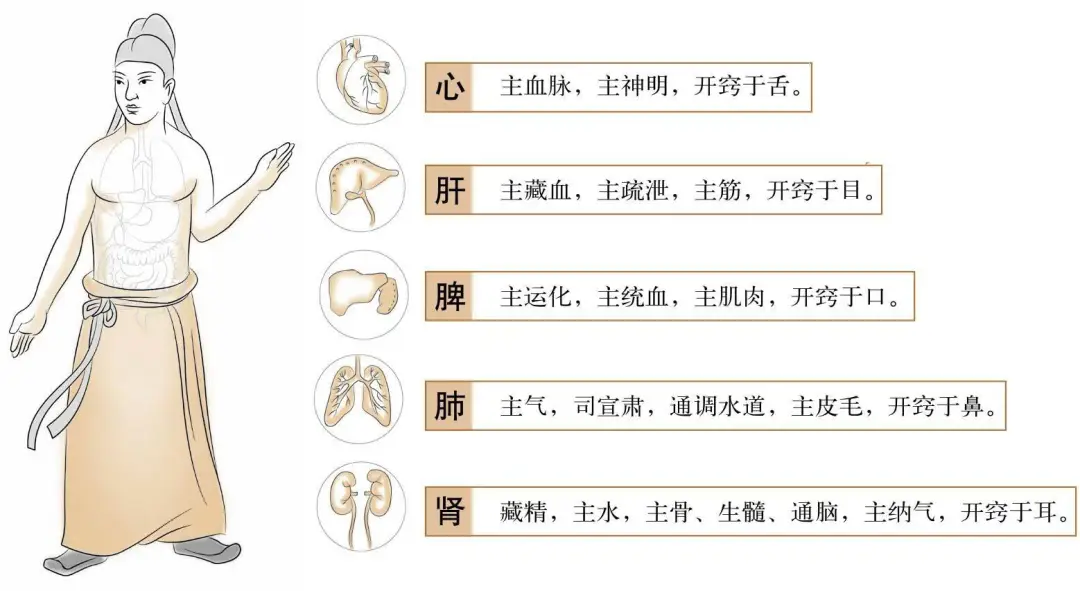
1. Heart (Xin): The heart generates blood and houses the spirit (Shen). It is the ruler of life activities in the human body. If the heart is not healthy, or is stimulated by emotions, or invaded by pathogenic factors, symptoms such as palpitations, anxiety, insomnia, forgetfulness, inappropriate laughter, delirium, and confusion may occur. When the heart is diseased, it not only loses its autonomy but can also disrupt the activities of other organs.
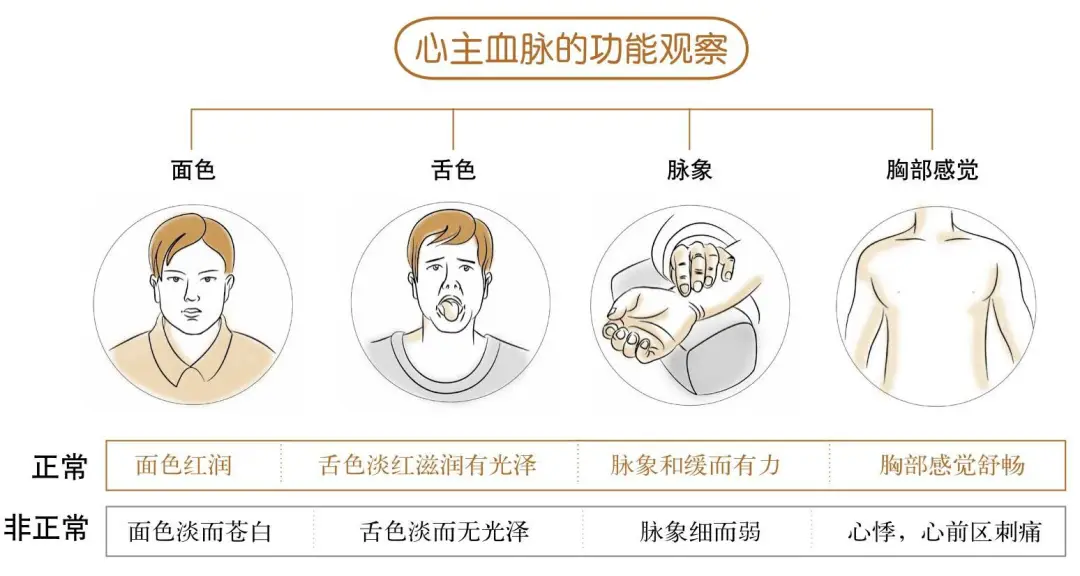
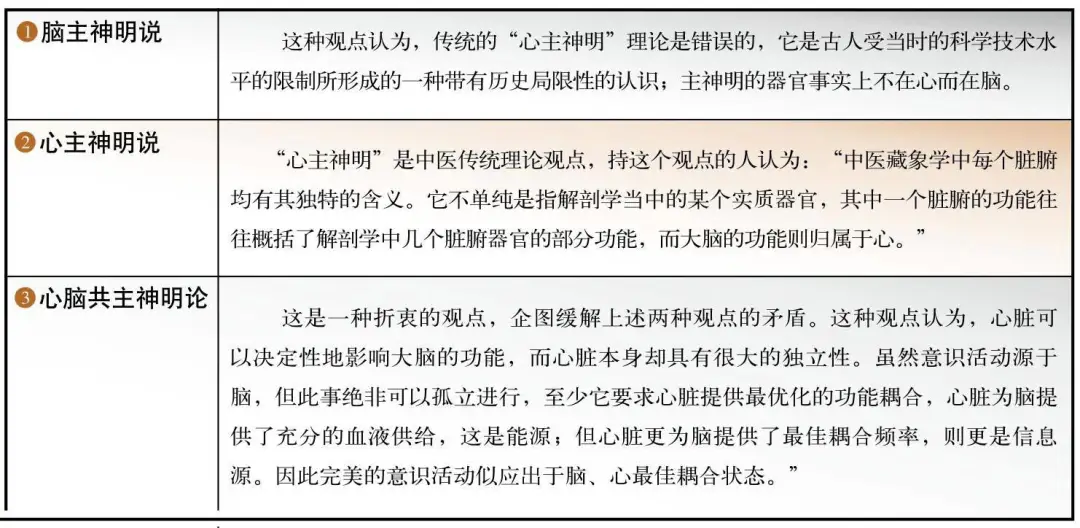
2. Liver (Gan): The liver stores blood and governs planning and deliberation. The liver is strong and is often referred to as the general; when stimulated by emotions, it can affect its normal function, leading to symptoms such as anger and headaches, and even cause upward fire resulting in vomiting blood.
The liver is also considered the “pre-natal” organ for women (indicating its role in reproductive functions), thus treatment of the liver is crucial for regulating menstruation and fertility.
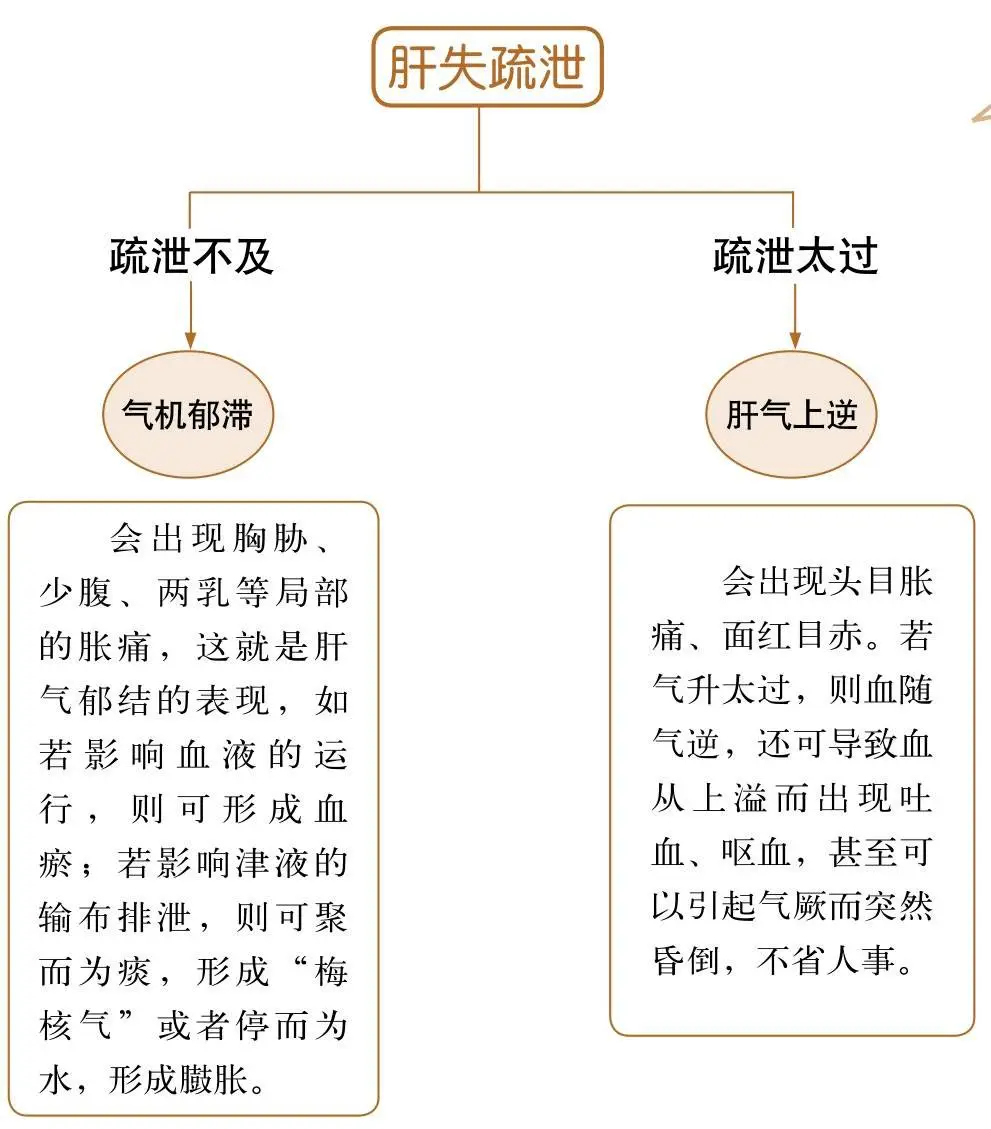
3. Spleen (Pi): The spleen governs blood and is responsible for transformation and transportation. The main source of life force is nutrition; the spleen digests food and transports its essence throughout the body, thus it is referred to as the foundation of “post-natal” life. If the spleen’s ability to transform is insufficient, it can lead to bloating after eating, resulting in muscle wasting and fatigue.
The spleen also governs the transformation of dampness; symptoms of damp stagnation, such as chest tightness, nausea, diarrhea, and edema, are often due to spleen deficiency, hence methods to strengthen the spleen are commonly used to resolve dampness.

4. Lung (Fei): The lungs govern qi and are responsible for clearing and regulating. When lung qi fails to descend, it can easily lead to cough and asthma; in cases of deficiency, symptoms such as shortness of breath and weak speech are common. The lungs also play a regulatory role in the circulation of blood governed by the heart; ancient texts describe the heart as the monarch and the lungs as the minister.
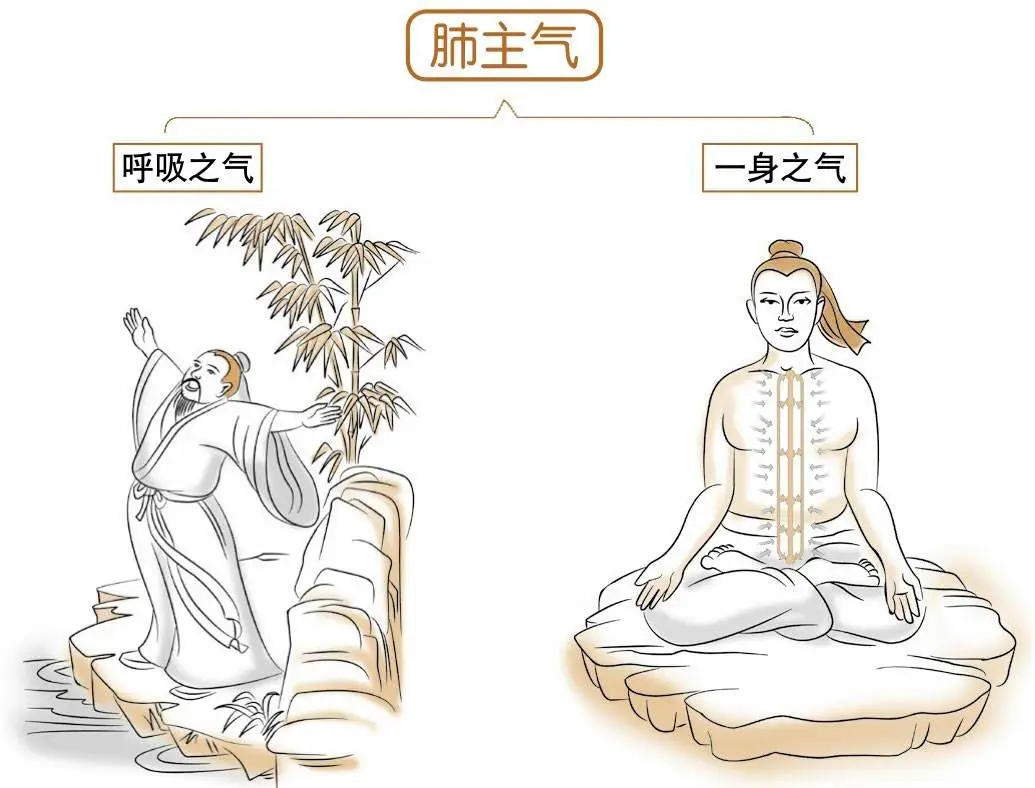

5. Kidney (Shen): The kidneys store essence and govern growth and development. The kidneys play a vital role in maintaining energy levels; kidney deficiency can lead to symptoms such as dizziness, tinnitus, poor vision, lower back pain, and lethargy. The kidneys are considered the “pre-natal” organ for men, similar to the liver’s role for women, referring to reproductive functions.
Thus, symptoms such as decreased libido, nocturnal emissions, cold semen, and premature ejaculation are treated through the kidneys. The kidneys have a unique characteristic; there are two kidneys, the left being the kidney and the right being the Mingmen (Gate of Life), with the kidneys governing yin and the Mingmen governing yang, hence the kidneys are also referred to as the “water-fire organ.” The true yin and true yang mentioned in clinical practice refer to this.
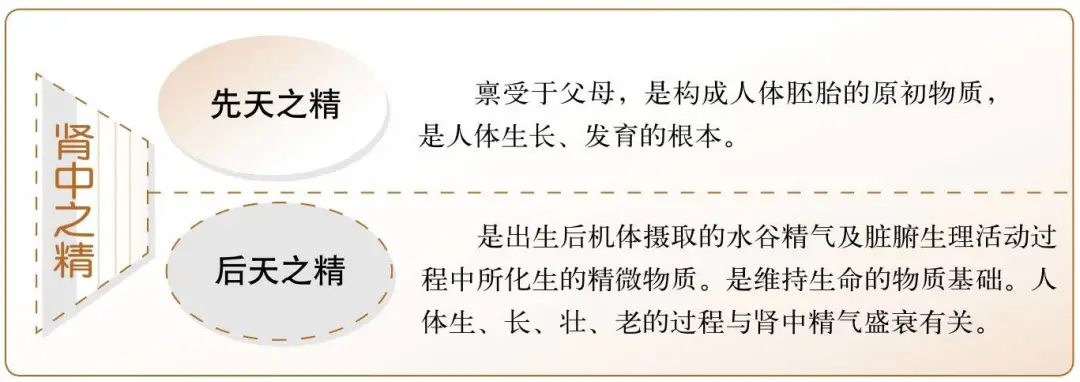
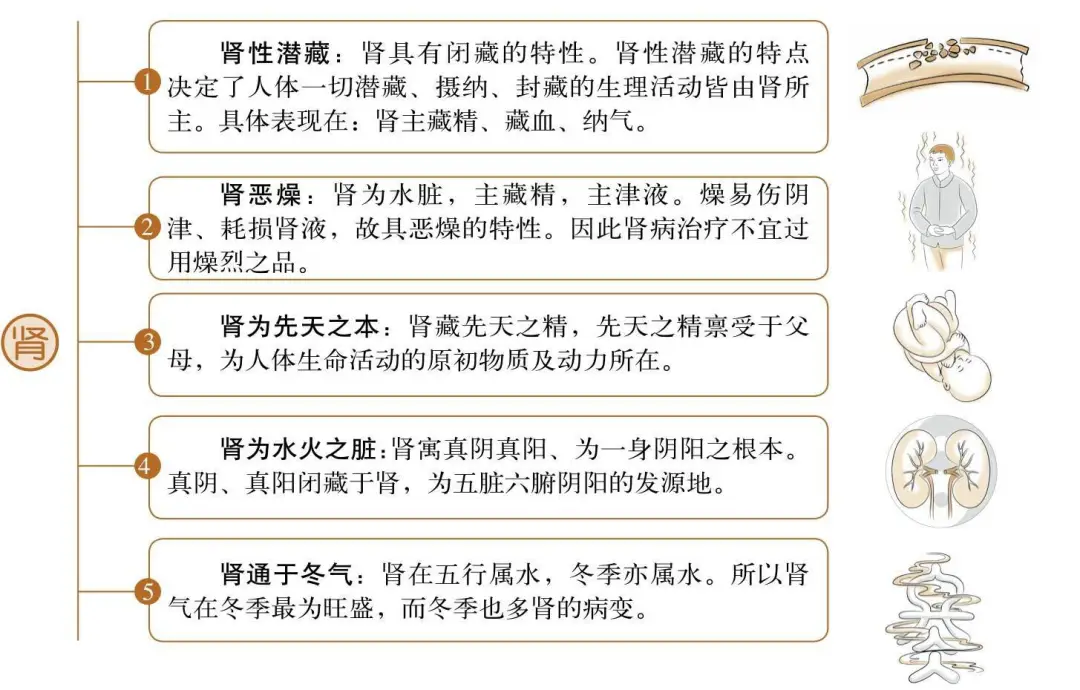


6. Gallbladder (Dan): The gallbladder is the organ of clarity and decision-making. The gallbladder and liver are interrelated; although the liver is strong, it cannot function without the gallbladder. The cooperation between the liver and gallbladder leads to courage. When gallbladder fire is excessive, symptoms such as irritability, headaches, chest tightness, side pain, bitter taste in the mouth, and vomiting of bitter fluids may occur.
7. Stomach (Wei): The stomach is the sea of food and drink, responsible for receiving and accepting. The stomach and spleen are interrelated; although the stomach is responsible for receiving, and the spleen for digestion, the stomach’s basic function includes both receiving and digesting, thus the stomach and spleen are often mentioned together. It is said that if the stomach cannot receive, digestion cannot occur; hence, “If the stomach qi is present, one lives; if absent, one dies,” highlighting the importance of the stomach’s function.
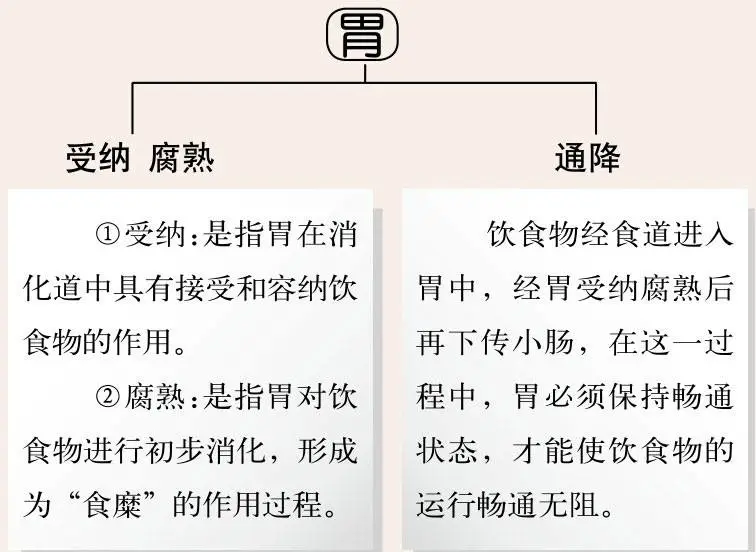

8. Small Intestine (Xiao Chang): The small intestine is the organ of reception and transformation. It receives the digested food from the stomach, further separating the clear from the turbid, allowing the essence to be stored in the five organs and the waste to be excreted through the six bowels, while the waste’s liquid is sent to the bladder and the residue to the large intestine. These are the functions of the small intestine in transformation.


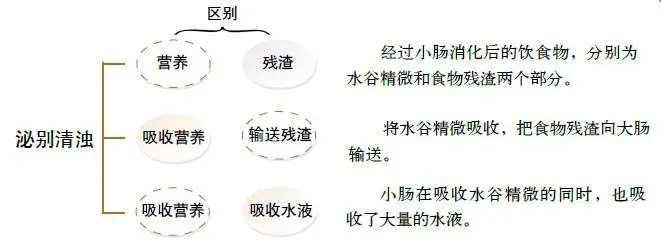
9. Large Intestine (Da Chang): The large intestine is the organ of conduction and excretion. It receives the waste from the small intestine and is responsible for transporting and excreting it, marking the final stage of the digestive process. Since the large intestine’s function is to conduct waste, it is responsible for bowel movements; thus, any issues such as constipation, diarrhea, dysentery, or blood in the stool are addressed through the large intestine, employing various methods such as promoting conduction, moistening, or binding.
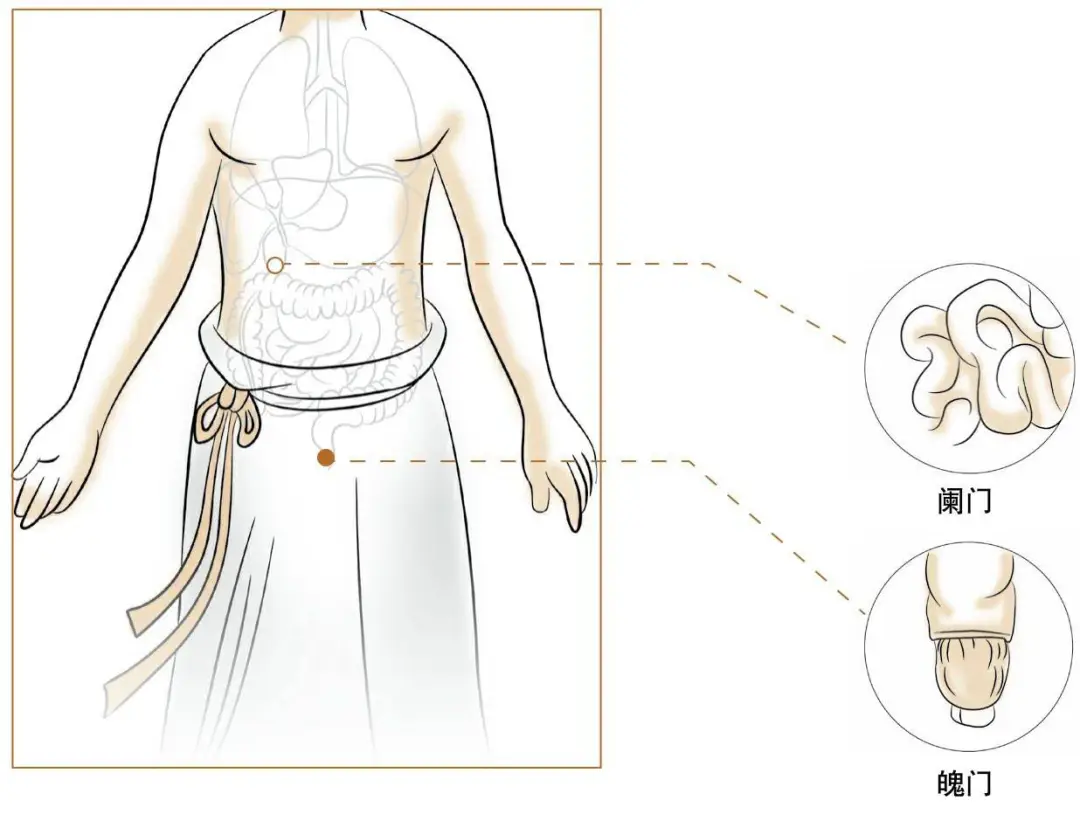

10. Bladder (Pang Guang): The bladder is the organ of storage and qi transformation. The bladder is where water and fluids accumulate; if qi transformation is obstructed, it can lead to urinary retention; if qi transformation is excessive, it can result in incontinence. The bladder’s qi transformation is related to the kidneys; sufficient kidney qi allows for transformation, while deficient kidney qi hinders it, thus treatments for urinary issues may sometimes involve warming the kidneys.

11. San Jiao (Three Jiao): The San Jiao is the organ of regulation and water movement. It consists of the upper, middle, and lower jiao. Its main function is to facilitate the movement of fluids; for example, to treat water retention and bloating, qi-promoting herbs are often used to help move fluids, commonly referred to as “qi-promoting” herbs that are used to smooth the San Jiao.
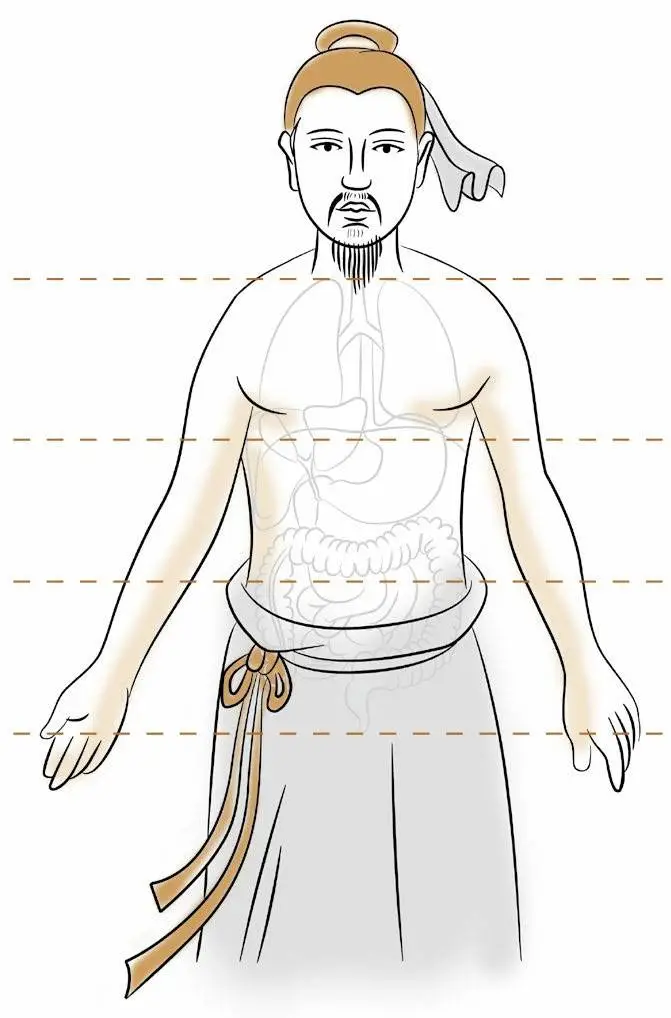
The upper jiao includes the heart and lungs.
The middle jiao includes the spleen, stomach, liver, and gallbladder.
The lower jiao includes the kidneys, bladder, small intestine, and large intestine.
Detailed Explanation of the Three Jiao:
Upper Jiao:It originates from the upper opening of the stomach, as “grains begin to enter the stomach, their essence first emerges from the two jiao of the stomach”; “the upper jiao develops and spreads the flavors of the five grains”; “the middle jiao also includes the stomach”. “Above the throat” refers to the upper jiao being adjacent to the esophagus, which ascends alongside the esophagus.
Middle Jiao:It is located within the stomach; after the upper jiao, the middle jiao also includes part of the stomach, connecting to the esophageal opening (the esophagus is the middle jiao), extending beyond the upper jiao (the trachea is the throat).
Lower Jiao:The lower jiao is distinct from the ileum, which connects to the bladder and infiltrates it. The ileum is also referred to as the large intestine in the “Inner Canon”. The term “distinct from the ileum” indicates the relationship and meridian connection between the lower jiao and the ileum, as the hand Shaoyang meridian “spreads to the pericardium, descends to the diaphragm, and follows the San Jiao”; the substance that “connects to the bladder and infiltrates” refers to the ureters, indicating the direct relationship between the lower jiao and the bladder.
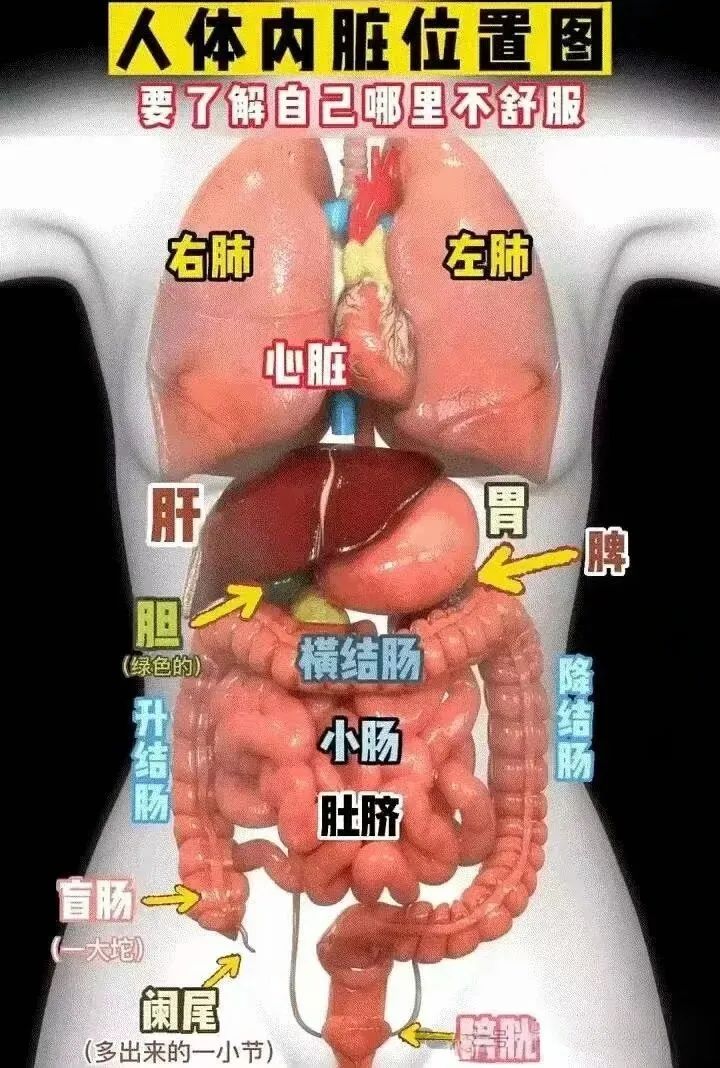
Each organ has its primary function and operates in collaboration with others. There is a “master-subordinate” relationship between the organs; for example, the kidneys govern the heart, the heart governs the lungs, the lungs govern the liver, and the liver governs the spleen. “Master” implies a controlling role, mutually regulating to maintain balance.
There is also a “cooperative” relationship between the organs and bowels; for instance, the lungs cooperate with the large intestine, the heart with the small intestine, the liver with the gallbladder, the spleen with the stomach, and the kidneys with the bladder. “Cooperation” indicates that the organs serve as the body while the bowels serve as the function, working together to complete their combined functions. The organs are yin, while the bowels are yang, hence this cooperation is also referred to as “interior-exterior”.
Although the organs are located within the body, they are closely connected to various tissues and organs. Therefore, observing the manifestations of these tissues and organs can provide insights into the condition of the organs, which is of great significance in diagnosis. The relationship between the internal organs and the body’s tissues and organs is commonly used in clinical practice,
For example: the liver opens to the eyes, its essence is in the tendons, and its manifestation is in the nails; the heart opens to the tongue, its essence is in the pulse, and its manifestation is in the face; the spleen opens to the mouth, its essence is in the flesh, and its manifestation is in the lips; the lungs open to the nose, its essence is in the skin, and its manifestation is in the hair; the kidneys open to the ears, its essence is in the bones, and its manifestation is in the hair. Additionally, the spleen governs the limbs, with the joints corresponding to the heart and lungs at the elbows, the liver at the armpits, the spleen at the hips, and the kidneys at the knees, etc.
Beyond the organs, there are also the extraordinary organs, namely the brain, marrow, bones, vessels, gallbladder, and uterus. The extraordinary organs are unique in that they resemble organs but are not classified as such; they have a similar form to the bowels but function like organs; they are extraordinarily important parts of the body.
These extraordinary organs are not isolated; they are connected to the organs; for instance, the brain is related to the heart and liver, and since the brain is related to the marrow, and the marrow is related to the bones, and the bones belong to the kidneys, the brain is also related to the kidneys; the uterus belongs to the liver, and due to menstruation and pregnancy being related to blood, it is also connected to the heart and spleen.
In contrast to the extraordinary organs, there are also the organs of transformation, namely the stomach, large intestine, small intestine, San Jiao, and bladder; these five organs belong to the digestive system among the six bowels. As mentioned above, all body tissues are interconnected, forming a complete and inseparable system.

